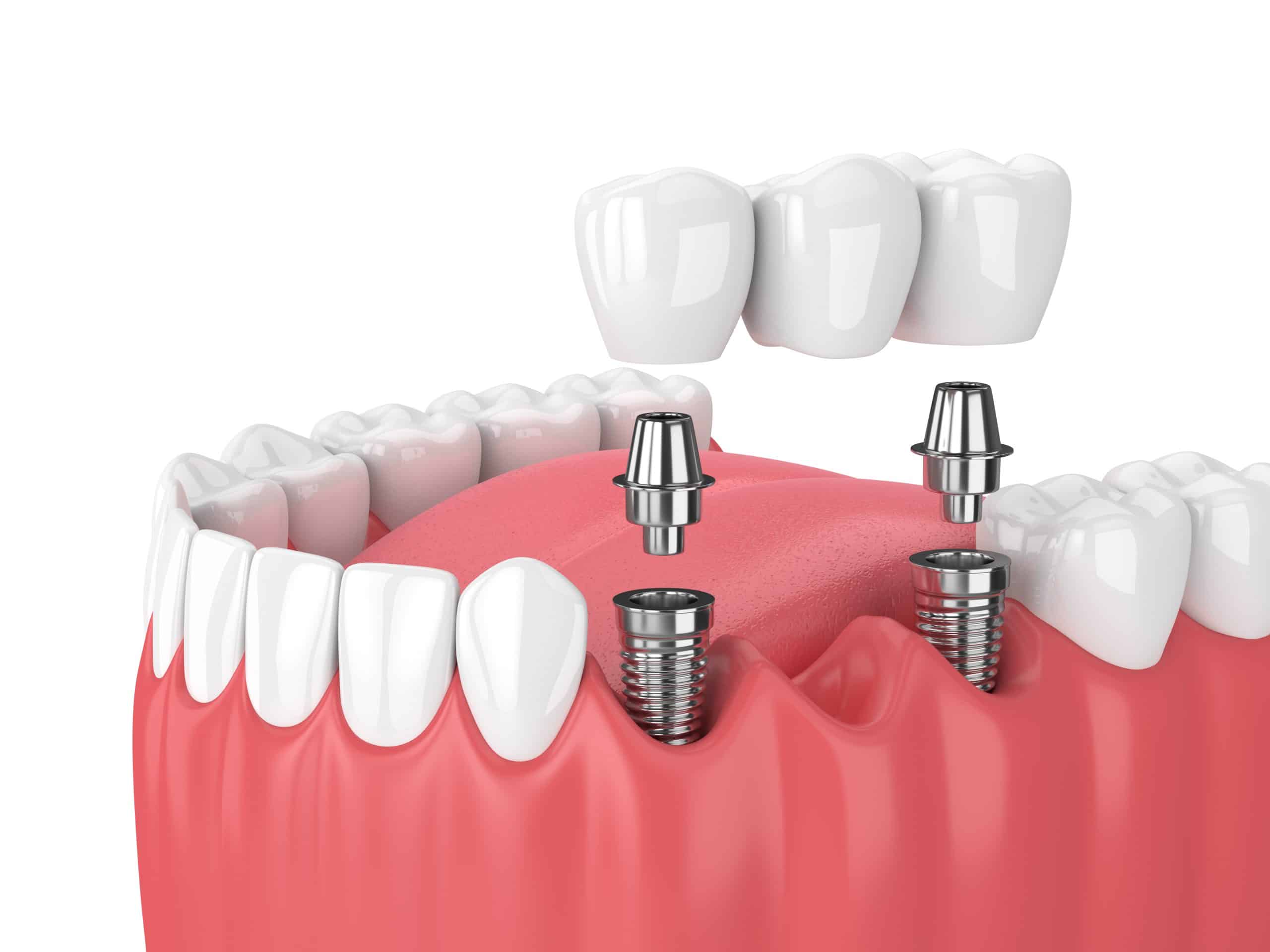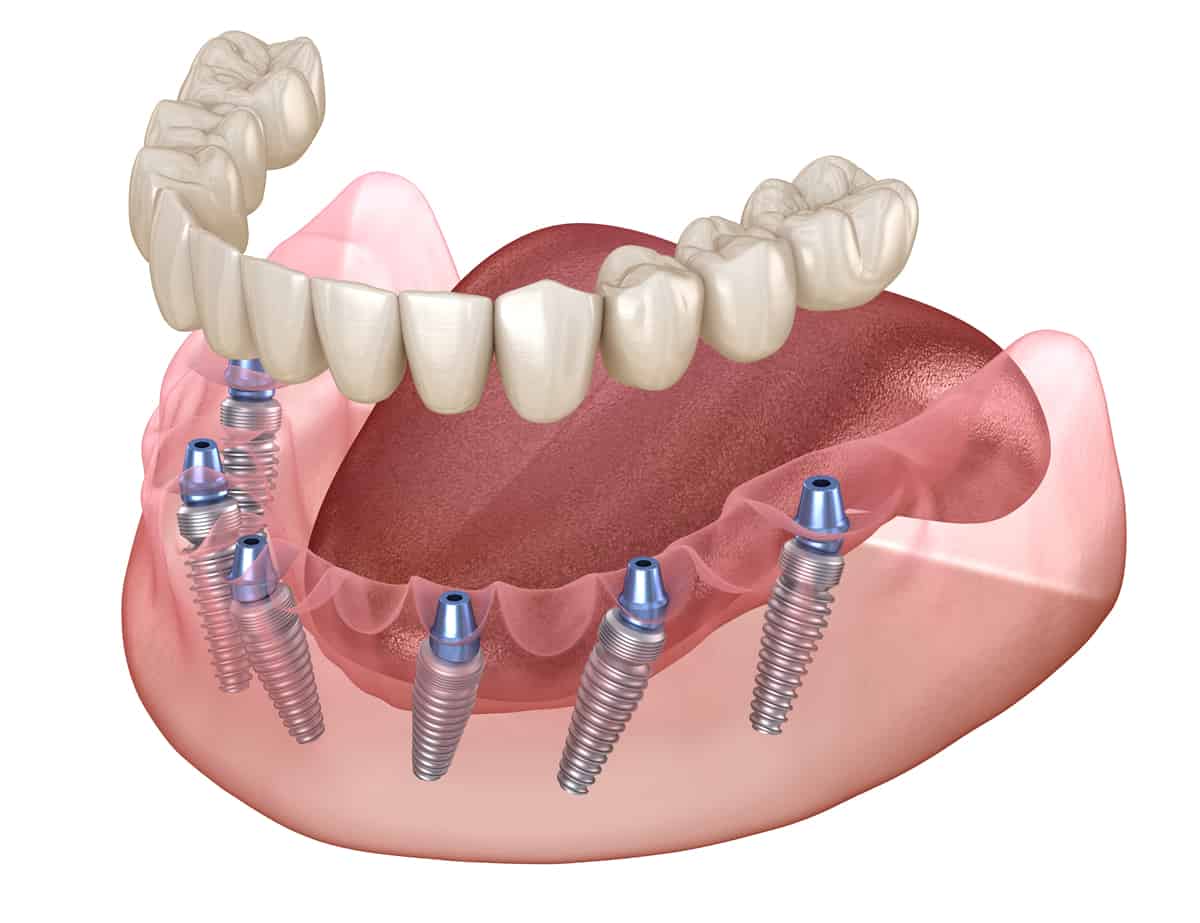IMPLANTS
Dental implants are artificial tooth roots that are placed into the jawbone to support replacement teeth or dental prostheses. They provide a strong foundation for fixed or removable teeth, allowing individuals to regain their ability to eat, speak, and smile with confidence. There are different types of dental implants available, including the "All-on-X" concept, which refers to a full arch of teeth supported by a smaller number of implants. Let's explore the various types of dental implants and their benefits, as well as the advantages of digital production techniques.
- Endosteal Implants: Endosteal implants are the most common type of dental implants. They are typically made of titanium and are surgically placed into the jawbone. These implants can support individual crowns, bridges, or dentures, depending on the patient's needs.Benefits:
- Strong and stable support for replacement teeth.
- Mimics the function and appearance of natural teeth.
- Long-lasting and durable.
- Promotes healthy jawbone integration.
- Subperiosteal Implants: Subperiosteal implants are less common and are used when there is insufficient bone height or quality for endosteal implants. Instead of being placed in the jawbone, subperiosteal implants are positioned beneath the gum tissue on or above the jawbone.Benefits:
- Suitable for patients with minimal bone height or density.
- Provides stable support for replacement teeth.
- Eliminates the need for bone grafting procedures.
- Can be a suitable alternative when conventional implants are not feasible.
- All-on-X implants: The All-on-X implant concept involves supporting a full arch of teeth with fewer implants. These implants are strategically placed to maximize support and stability for a complete set of prosthetic teeth.Benefits:
- Fewer implants required, reducing the need for extensive surgery.
- Quicker treatment and recovery time compared to traditional implant-supported dentures.
- Enhanced stability and chewing function.
- Improved aesthetics and self-confidence.


In addition to the various types of dental implants, digital production techniques have revolutionized the field of implant dentistry. Here are the benefits of digital production for dental implants:
- Precision and Accuracy: Digital techniques, such as computer-aided design/computer-aided manufacturing (CAD/CAM) and 3D printing, allow for precise planning, design, and production of dental implant components. This results in highly accurate and customized implant restorations that fit perfectly in the patient's mouth.
- Time Efficiency: Digital production techniques streamline the process by eliminating the need for manual labor and traditional impression techniques. Computer-guided implant placement reduces surgical time and increases efficiency, leading to faster treatment completion.
- Predictability and Aesthetics: Digital workflows enable comprehensive treatment planning, allowing dentists to simulate the final outcome before beginning the implant placement process. This ensures predictable results and allows for customization to achieve optimal aesthetics, resulting in natural-looking and harmonious restorations.
- Improved Patient Experience: Digital production techniques reduce the number of appointments required and minimize discomfort for patients. The precise fit of digitally produced dental implants enhances patient comfort and satisfaction.
Overall, the variety of dental implants available, along with advancements in digital production techniques, have significantly improved the outcomes and experience for individuals seeking tooth replacement options. Dentists can now provide more efficient, predictable, and aesthetically pleasing implant treatments, leading to better oral health and quality of life for patients.
Workflow Comparison and ROI
Let's Talk
Find out how we can improve your bottom line. Contact us and one of our members will be happy to answer all of your questions.
